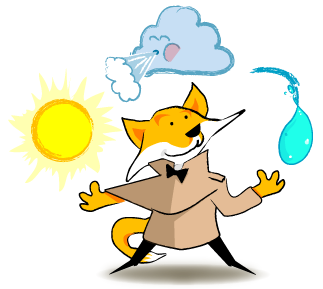Lesson 4: Mapping Energy Increases and Decreases
Overview
In this lesson, students begin to consider the how the amount of energy available changes as it is transferred from an energy source to the intended energy receiver. Students discover that not all of the energy available from a source is transferred to the receiver in useful forms.
Key Ideas
- When an interaction occurs, there is a decrease in some forms of energy in the source and an increase in some forms of energy in the receiver as energy is transferred from one object to another.
- Not all the energy that goes into a device or process gets used in the way that people intend. As energy is transferred from one object to another, some transferred energy is likely to go into heat.
Lesson Goals
Students will:
- identify the energy increases and energy decreases for an interaction in general terms.
- describe “intended” energy transfers and transformations and “unintended” energy transfers and transformations.
Lesson Resources
 Download Lesson Plan (15 pages, 672 KB)
Download Lesson Plan (15 pages, 672 KB)
 Student Handout 4.1: Building a Rubber Band Powered Spool Racer (1 page, 536 KB)
Student Handout 4.1: Building a Rubber Band Powered Spool Racer (1 page, 536 KB)

Student Handout 4.2: (Optional) Energy Map Words (2 pages, 484 KB)
 Teacher Resource 4.1: Everyday Energy Interactions (1 page, 400 KB)
Teacher Resource 4.1: Everyday Energy Interactions (1 page, 400 KB)
 Teacher Resource 4.2: Possible Responses for Everyday Energy Interactions (1 pages, 404 KB)
Teacher Resource 4.2: Possible Responses for Everyday Energy Interactions (1 pages, 404 KB)
How to build a Rubber Band Powered Spool Racer from ZOOM
Links
- Learn about infrared images. View an image that has been heated by friction from the road or view an image of someone rubbing their hands together (worldofwarmth.com)
- Consider the energy transfers in this 2003 Rube Goldberg Honda advertisement. What are the intended and unintended effects?
- Find out how energy is measured.
- Find out more about how a particular device works. Searchable websites such as How Stuff Works or print resources like David Macaulay’s The Way Things Work can be useful. Consider energy transfers. Information about how air conditioners, fire, refrigerators, thermometers, toasters, and transformers work can be found at Energy Quest's How Things Work page.
Connections to Maine Agencies
A Maine Energy Education Representative Program (MEEP) representative will come to interested schools, free of charge, to guide and support the concepts in this lesson:
- Electricity and the Environment presentation: Students become aware of electricity in this session. They make electricity from an apple in the Apple Battery experiment and then learn how electricity is made in the real world. Next, with MEEP's PV Fan and Mini-Wind Turbine activities, they make electricity from renewable resources. These activities can be combined with the Great Energy Debate and Energy Jeopardy in a full day workshop.
- Kid Wind: Students design and build their own mini wind turbine blades. They then compete to see whose design makes the most electricity.
For schools in Aroostook County, a Maine Public Service (MPS) representative will come to interested schools, free of charge, to guide and support the concepts developed in this lesson.


